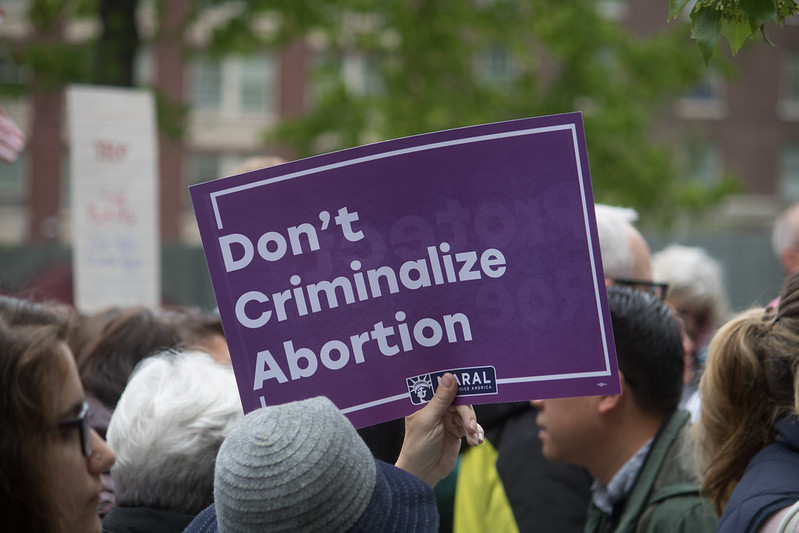Updated Wednesday, Sept. 1 at 8:45 a.m. PT.
If the restrictions on medication abortion in Texas go into effect, combined with the six-week abortion ban, the state will have essentially banned abortion without adopting a comprehensive abortion ban.

On Wednesday, September 1, an unconscionably cruel abortion ban (S.B. 8) went into effect in Texas, after the Supreme Court failed to intervene. The ban makes it illegal to get an abortion starting at six weeks of pregnancy—so early that many people may not even know that they are pregnant, and certainly before most folks who want an abortion are able to figure out the logistics of finding and scheduling an appointment.
This ban comes with a new, uniquely cruel twist that deputizes and incentivizes anti-abortion ideologues from across the country to seek out and punish abortion providers in Texas or individuals who help patients get care through financial support or transportation.
This law is part of a three-pronged strategy by Texas lawmakers in relentless pursuit of banning abortion:
- Ban abortion at six weeks of pregnancy and incentivize anti-abortion vigilantes to act as de facto bounty hunters and bury abortion providers in frivolous lawsuits.
- Ban the most common method of abortion after 15 weeks of pregnancy (not yet in effect).
- Restrict medication abortion (this bill has passed the Texas Senate and is on its way to a vote in the Texas House).
The consequences of any one of these measures taking effect would be devastating. Taken together, they amount to a near-total abortion ban.
And on top of these three lines of attack, Texas has also enacted a “trigger ban” that would quickly ban abortion in the state if Roe v. Wade were overturned and states have their own authority to prohibit abortion.
A 2,000% Increase in Travel Distance
Among many other harms, if most or all legal abortion care in Texas were shut down, the average one-way driving distance to an abortion clinic would increase from 12 miles to 248 miles—20 times the distance. The seven million women of reproductive age in Texas would find their next nearest clinic primarily in two neighboring states:
- Louisiana: For 4.2 million Texas women of reproductive age, their next nearest clinic would be in Louisiana, a state considered “very hostile” to abortion rights that has a two-visit requirement for abortion patients.
- Oklahoma: For 2.24 million Texas women of reproductive age, their next nearest clinic would be in Oklahoma, a state considered “hostile” to abortion rights that has a 72-hour waiting period before a patient can obtain an abortion.
Both states have very limited capacity to absorb an influx of new patients—which means some people traveling from Texas likely would need to go even farther than one state away for care.
As is the case with all abortion restrictions, the harm of dramatically increased travel distances and related logistics would fall hardest on those already facing oppression in various and overlapping ways—whether because of their lack of financial resources, young age, disability, immigration status or because they are Black, Indigenous or other people of color.
Abortion At and After 15 Weeks Is Important and Necessary
In addition to the six-week ban which went into effect on September 1, Texas had enacted a ban in 2017 on D&E (dilation and evacuation), which is the standard method of abortion after approximately 15 weeks of pregnancy. The 5th Circuit Court of Appeals recently upheld that ban; this is the first time that a federal court has done so. (The ban has not yet gone into effect.)
While not every abortion at or after 15 weeks is provided using the D&E method, the vast majority are. Guttmacher estimates that between 6.3 percent and 7.4 percent of all U.S. abortions are obtained at or after 15 weeks of pregnancy. Based on 2017 abortion incidence statistics, this means that between 54,000 and 63,000 abortions nationwide occur in this time frame.
Texas Now Targeting Medication Abortion
In its current special session, the Texas legislature has also moved forward with restrictions on medication abortion. The bill has passed the Texas Senate and is on its way to a floor vote in the Texas House soon.

Since it was first approved more than 20 years ago, medication abortion has transformed the landscape of how people obtain and experience abortion in this country, and has the potential to radically expand access to abortion care if freed from politically motivated restrictions. Of course, that’s why anti-abortion policymakers remain fixated on keeping it out of the hands of people who want to use this method.
In the two decades following approval by the U.S. Food and Drug Administration, medication abortion has been proven time and again to be safe and effective, and has come to be used routinely. Guttmacher’s most recent research found that in 2017, medication abortion accounted for 39 percent of all abortions in the United States and 60 percent of all abortions taking place up to 10 weeks’ gestation.
Even before the COVID-19 pandemic, medication abortion use was rapidly increasing: The number of medication abortions increased 73 percent between 2008 and 2017, even as the overall number of abortions nationally declined over that period.
If the restrictions on medication abortion in Texas are enacted and go into effect, and the six-week abortion ban goes into effect, the state will have essentially banned abortion without adopting a comprehensive abortion ban.
Whether they’re pushing a ban on abortion early in pregnancy, a ban on the most common method of abortion after 15 weeks, or restrictions on medication abortion, the end goal for state policymakers who oppose abortion is—and always has been—to ban abortion for any reason and at any stage in pregnancy.
It is long past time for Congress to step up, including by passing the Women’s Health Protection Act. This legislation would protect access to abortion—whether someone lives in Texas, Indiana, Hawaii or Florida—by establishing federal statutory rights to both receive and provide abortion care, free from medically unnecessary restrictions and bans.
Read Guttmacher’s latest analysis on the situation in Texas.
Up next:





